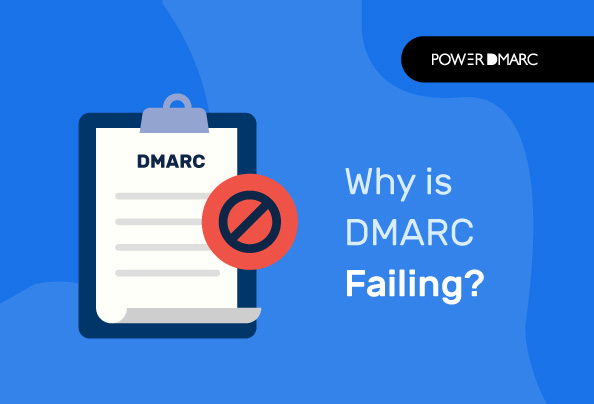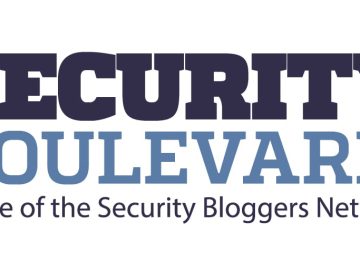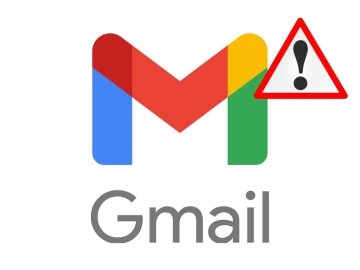Reading Time: 10 min
With over 4.48 billion email users worldwide sending countless messages daily, DMARC fail errors become a big issue. DMARC, short for Domain-based Message Authentication, Reporting, and Conformance, is a security protocol that protects your emails from impersonation and phishing attacks. However, sometimes DMARC fails and potentially disrupts email delivery.
DMARC failure can be frustrating, especially if you rely on email for business. They can even prevent your emails from reaching their intended recipients. Note that DMARC requires either SPF or DKIM to pass when both are implemented. However, if DMARC relies on only SPF or DKIM, failure of either of the protocols will cause DMARC authentication to fail.
Common reasons why DMARC is failing are:
- DMARC alignment failures
- DKIM signature mismatch
- Sending source impersonation
- Domain spoofing
In short, if DMARC fails your email fails to pass DMARC authentication. A DMARC fail error can impact your email marketing efforts and significantly reduce your email deliverability rates.
In this article you will learn:
- Why it’s important to prevent DMARC failures
- Common reason why DMARC is failing
- How to fix DMARC fail errors
An Overview of DMARC
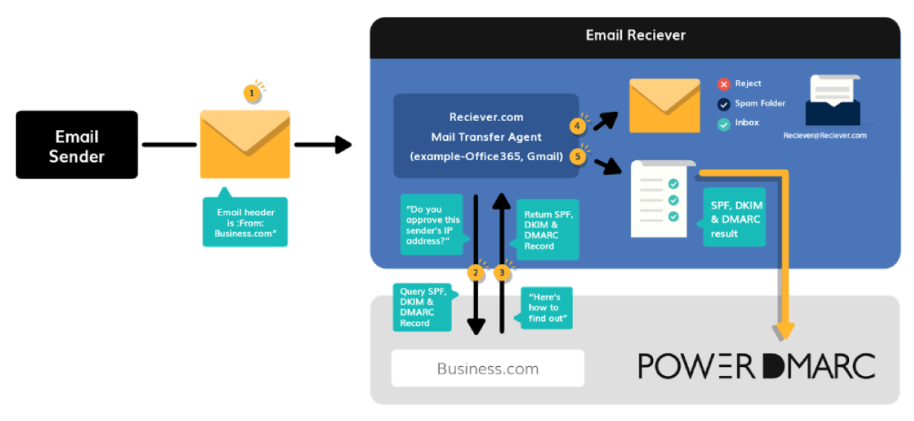
DMARC stands for Domain-based Message Authentication, Reporting, and Conformance. It is an email authentication protocol that provides an additional layer of security by helping prevent email spoofing and phishing attacks. DMARC works by allowing domain owners to publish policies in their DNS records, These policies instruct receiving mail servers how to handle emails that claim to be from their domain.
You can use DMARC to reject or quarantine unauthorized emails, providing better control over email delivery. DMARC also generates reports that provide valuable insights into email authentication failures.
Here are some recent statistics on DMARC across industries:
- The DMARC industry saw an 85% growth in 2019
- In 2021, the number of valid DMARC policies increased by 84%
- 2021 saw 5 million new DMARC records added as compared to 2020
- The global DMARC software market is anticipated to reach almost $800 million by 2030
Overall, DMARC helps enhance email security by enforcing authentication checks and enabling organizations to protect their brand reputation and users from email-based threats
Why is DMARC Failing?
DMARC failure can occur due to various reasons, including SPF and DKIM authentication failures, misalignment between the “From” domain, SPF, and DKIM, issues with forwarding or third-party services modifying email signatures, misconfigured DMARC policies, and attempts by malicious actors to spoof legitimate domains.
DMARC fail can lead to email authentication issues, potential delivery problems, and an increased risk of phishing attacks. Understanding these causes and implementing proper configurations and authentication measures can help improve DMARC compliance and enhance email security.
Common reasons for DMARC fail can include alignment failures, sending source misalignment, problems with your DKIM signature, forwarded emails, etc. Let’s explore each of these in detail:
1. DMARC Alignment Failures
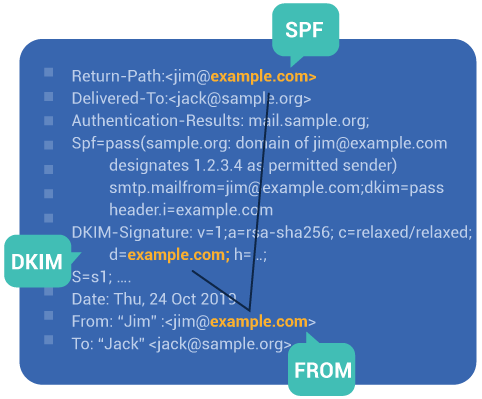
DMARC makes use of domain alignment to authenticate your emails. This means that DMARC verifies whether the domain mentioned in the From address (in the visible header) is authentic by matching it against the domain mentioned in the hidden Return-path header (for SPF) and DKIM signature header (for DKIM). If either is a match, the email passes DMARC, else it leads to DMARC fail.
Hence, if your emails are failing DMARC it can be a case of domain misalignment. That is neither SPF nor DKIM identifiers are aligning and the email appears to be sent from an unauthorized source. This however is just one of the reasons for DMARC failure.
DMARC Alignment Mode
Your protocol alignment mode can also lead to DMARC failure. You can choose from the following alignment modes for SPF authentication:
- Relaxed: This signifies that if the domain in the Return-path header and the domain in the From header are simply an organizational match, even then SPF will pass.
- Strict: This signifies that only if the domain in the Return-path header and the domain in the From header are an exact match, only then SPF will pass.
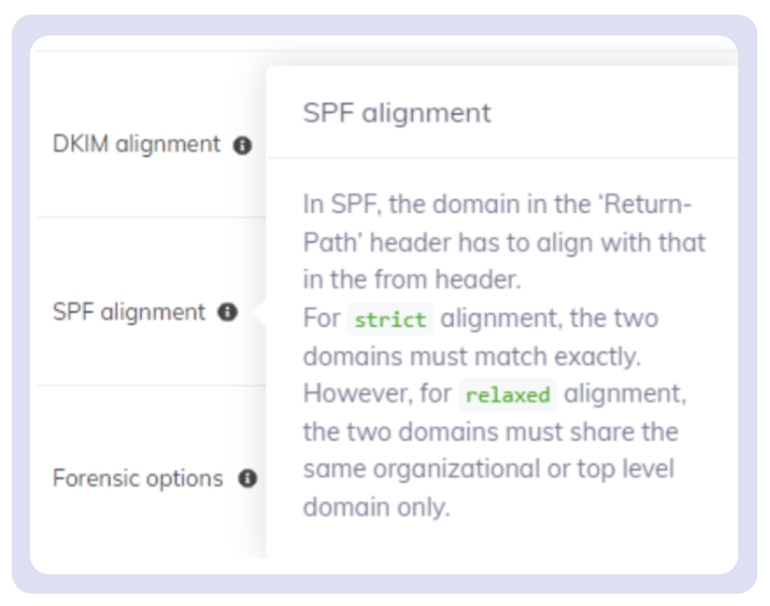
You can choose from the following alignment modes for DKIM authentication:
- Relaxed: This signifies that if the domain in the DKIM signature and the domain in the From header are simply an organizational match, even then DKIM will pass.
- Strict: This signifies that only if the domain in the DKIM signature and the domain in the From header are an exact match, only then DKIM passes.
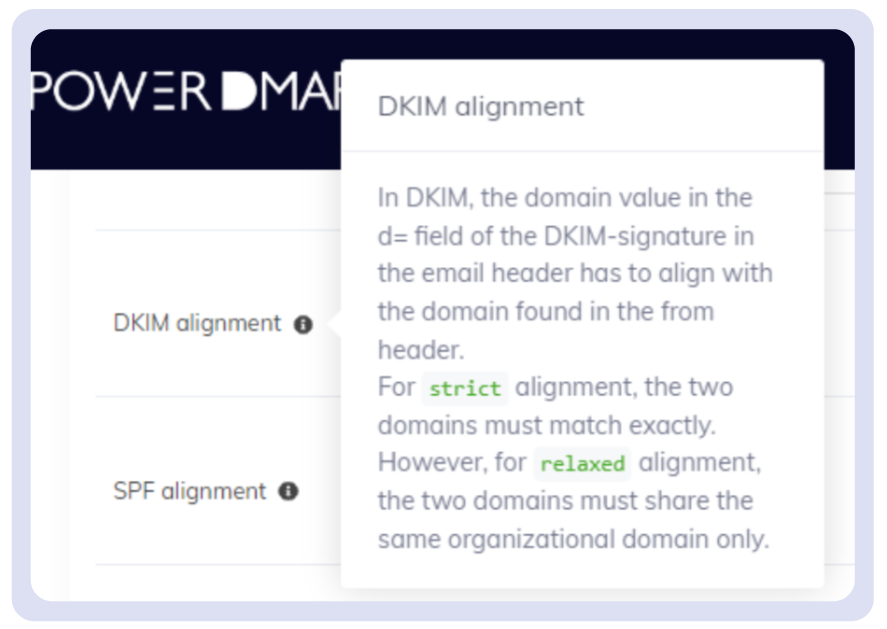
Note that for emails to pass DMARC authentication, either SPF or DKIM needs to align.
2. DKIM Signature is Not Set Up
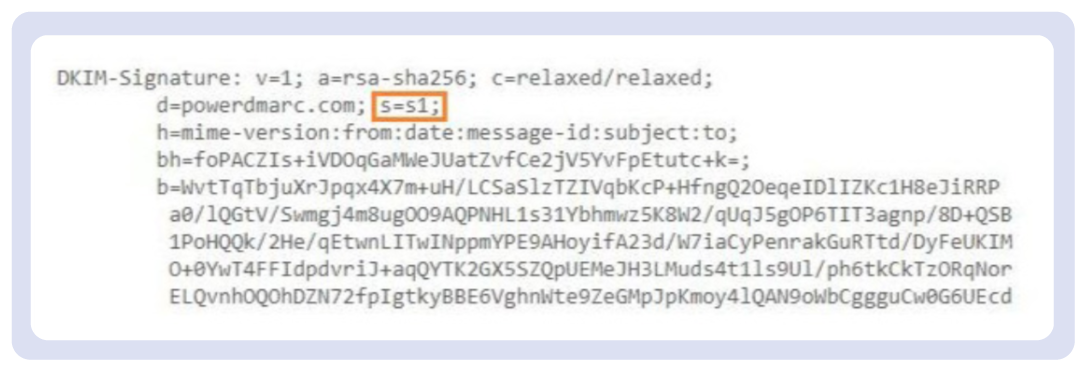
A very common case in which your DMARC may be failing is that you haven’t specified a DKIM signature for your domain. In such cases, your email exchange service provider assigns a default DKIM signature to your outbound emails that don’t align with the domain in your From header. The receiving MTA fails to align the two domains, and hence, DKIM and DMARC fail for your message.
3. Sending Sources Not Added to Your DNS
It is important to note that when you set up DMARC for your domain with SPF, receiving MTAs perform DNS queries to authorize your sending sources. This means that unless you have all your authorized sending sources listed in your domain’s DNS, your emails will fail SPF and subsequently DMARC for those sources that are not listed since the receiver would not be able to find them in your DNS.
Hence, to ensure that your legitimate emails are always delivered be sure to make entries on all your authorized third-party email vendors that are authorized to send emails on behalf of your domain, in your SPF DNS record.
4. Email Forwarded through Intermediary Servers
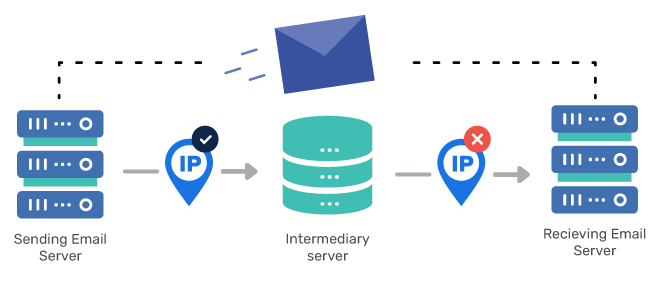
During email forwarding, the email passes through an intermediary server before it ultimately gets delivered to the receiving server. SPF check fails since the IP address of the intermediary server doesn’t match that of the sending server, and this new IP address is usually not included within the original server’s SPF record.
On the contrary, forwarding emails usually don’t impact DKIM email authentication, unless the intermediary server or the forwarding entity makes certain alterations in the content of the message.
To resolve this issue, you should immediately opt for full DMARC compliance at your organization by aligning and authenticating all outgoing messages against both SPF and DKIM, for an email to pass DMARC authentication, the email would be required to pass either SPF or DKIM authentication and alignment.
Related read: Email forwarding and DMARC
5. Your Domain is Being Spoofed
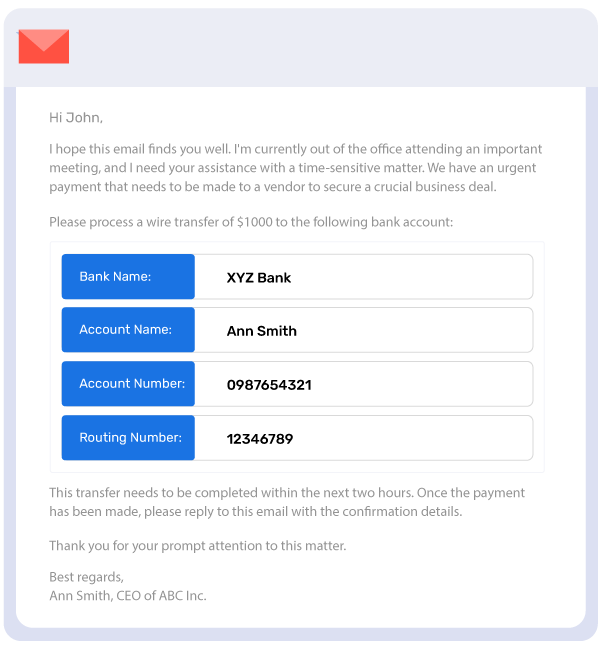
If all is well on the implementation side, your emails may be failing DMARC as a result of a spoofing attack. This is when impersonators and threat actors try to send emails that appear to be coming from your domain using a malicious IP address.
Recent email fraud statistics have concluded that email spoofing cases are on the rise, posing a big threat to your organization’s reputation. In such cases, if you have DMARC implemented on a reject policy, it will fail and the spoofed email will not be delivered to your recipient’s inbox. Hence domain spoofing can be the answer to why is DMARC failing in most cases.
Why does DMARC fail for third-party mailbox providers?
If you are using external mailbox providers to send emails on your behalf, you need to enable DMARC, SPF, and/or DKIM for them. You can do so by either contacting them and asking them to handle implementation for you, or you can take matters into your own hands and manually activate the protocols. To do so you need to have access to your account portal hosted on each of these platforms (as an admin).
Failing to activate these protocols for your external mailbox provider can lead to DMARC fail.
In case of DMARC failure for your Gmail messages, hover over to your domain’s SPF record and check whether you have included _spf.google.com in it. If not, this may be a reason why receiving servers are failing to identify Gmail as your authorized sending source. The same applies to your emails sent from MailChimp, SendGrid, and others.
How to detect messages failing DMARC?
DMARC failure for messages can be detected easily if you have reporting enabled for your DMARC reports. Alternatively, you can conduct an email header analysis or use Gmail’s email; log search. Let’s explore how:
1. Enable DMARC reporting for your domains
To detect DMARC fail, use this convenient feature offered by your DMARC protocol. You can receive reports containing your DMARC data from ESPs by simply defining a “rua” tag in your DMARC DNS record. Your syntax might be as follows:
v=DMARC1; ptc=100; p=reject; rua=mailto:[email protected];
The rua tag should contain the email address on which you want to receive your reports.
At PowerDMARC we provide simplified and human-readable reports that help you detect DMARC fail easily and troubleshoot it faster:
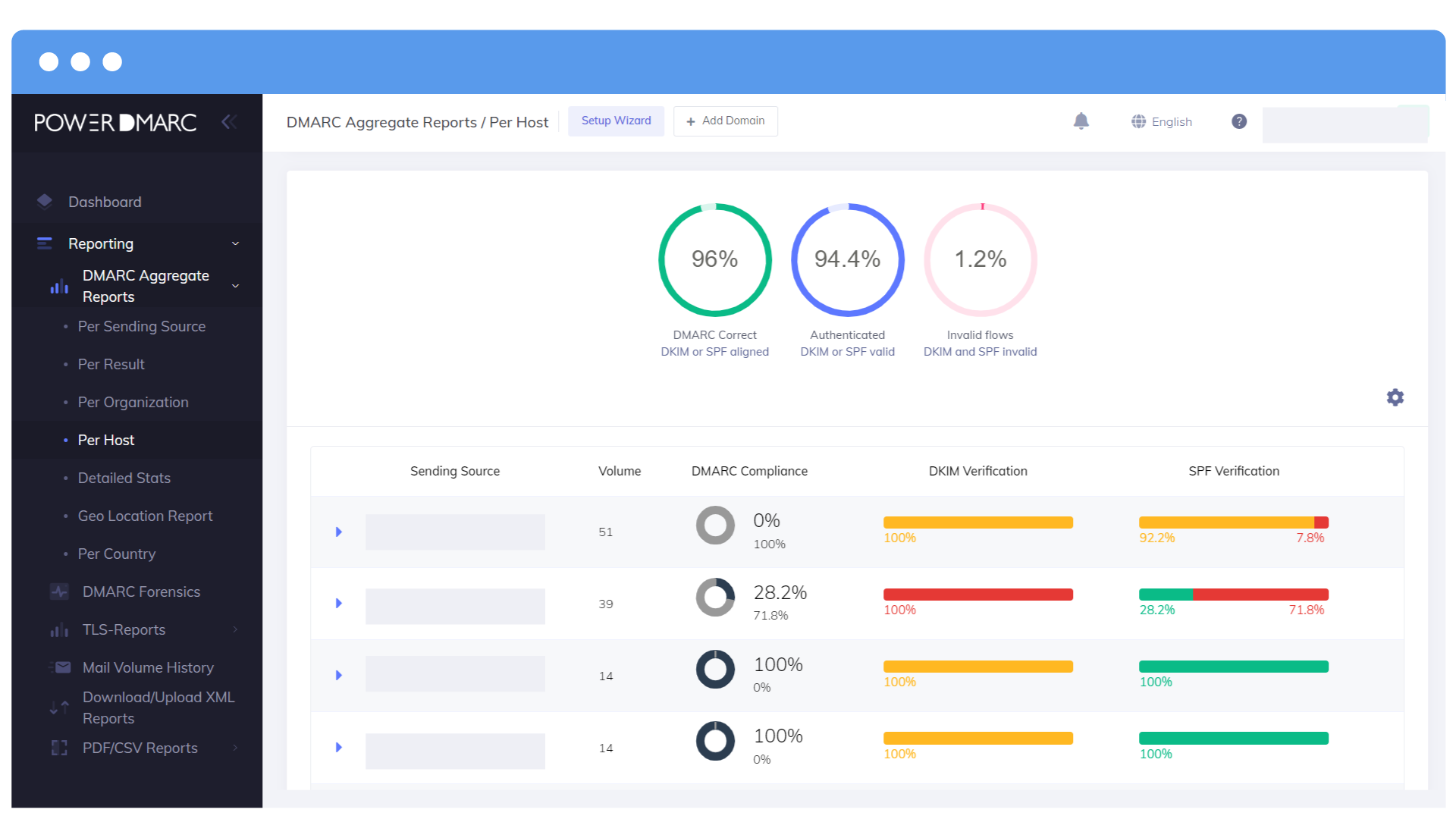
2. Analyze Email Headers manually or deploy analysis tools
DMARC fail can also be detected by analyzing your email headers.
a. Manual method
You can either analyze headers manually as shown below
If you use Gmail to send emails, you can click on a message, click on “more” (the 3 dots in the upper right corner), and then click “show original”:
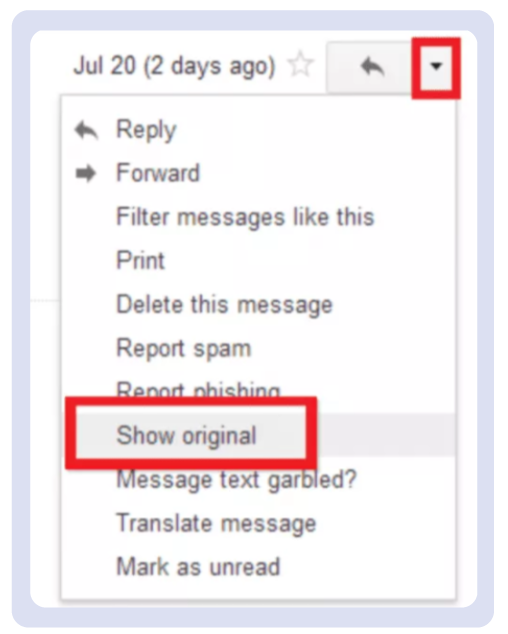
You can inspect your DMARC authentication results now:

b. Automated analysis tools
PowerDMARC’s email header analyzer is an excellent tool for instant detection of DMARC failure errors and mitigating the DMARC fail issue.
With us, you get a comprehensive analysis of the status of DMARC for your emails, alignments, and other compliances as shown below:
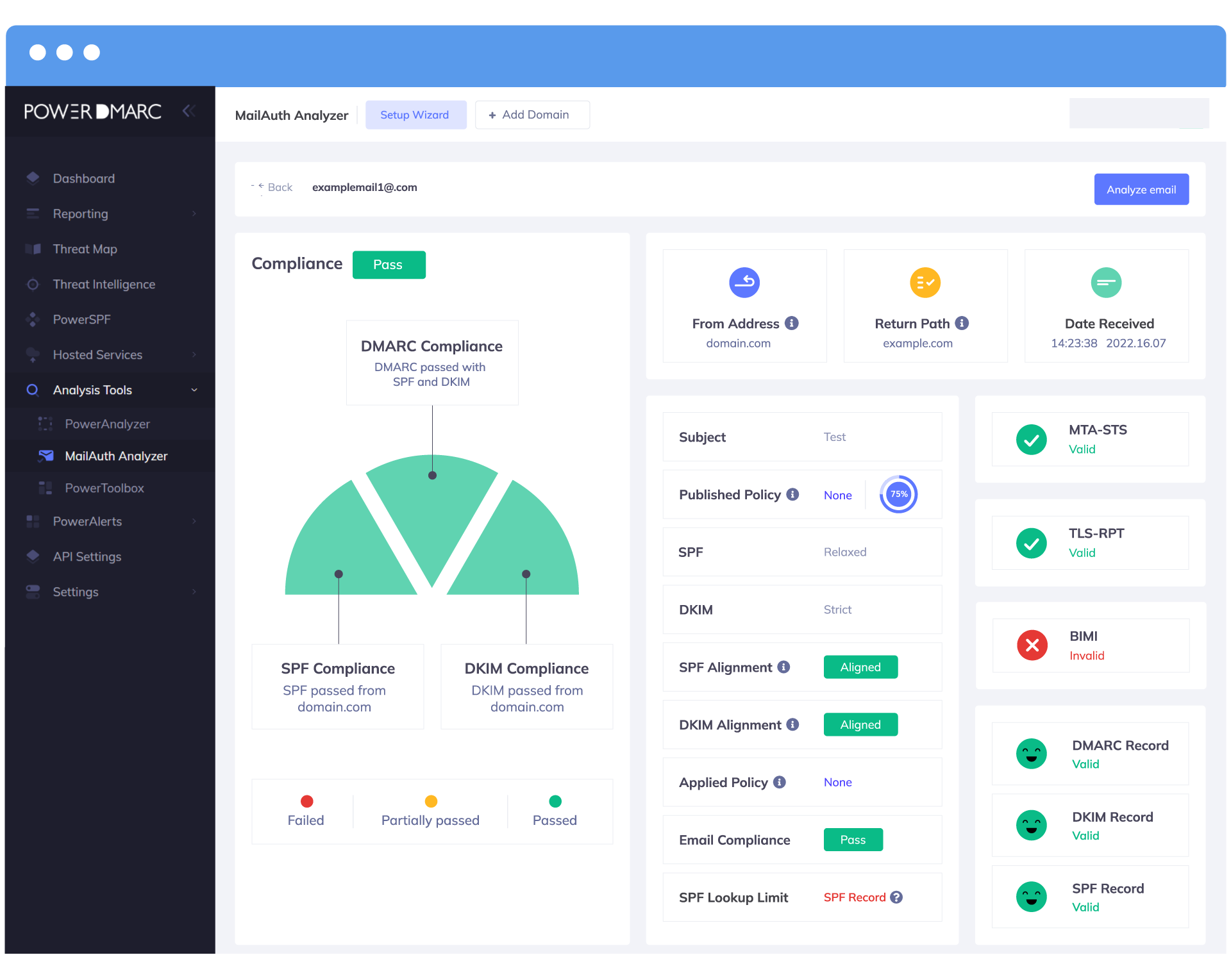
3. Use Google’s Email Log Search
You can find additional information about a particular message failing DMARC by using Google’s email log search. This will unveil message details, Post-delivery message details, and Recipient details. The results are presented in a tabular format as shown below:

Image source
4 Steps to Fix DMARC Fail
To fix DMARC failure, we recommend that you sign up with our DMARC Analyzer and start your journey of DMARC reporting and monitoring.
Step 1: Start at None
With a none policy, you can begin by monitoring your domain with DMARC (RUA) Aggregate Reports and keep a close eye on your inbound and outbound emails, this will help you respond to any unwanted delivery issues.
Step 2: Shift to Enforcement
After that, we help you shift to an enforced policy that would ultimately aid you in gaining immunity against domain spoofing and phishing attacks.
Step 3: Use our AI-powered Threat Detection
Takedown malicious IP addresses and report them directly from the PowerDMARC platform to evade future impersonation attacks, with the help of our Threat Intelligence engine.
Step 4: Monitor Continuously
Enable DMARC (RUF) Forensic reports gaining detailed information about cases where your emails have failed DMARC so that you can get to the root of the problem and fix it faster.
How to tackle messages that fail DMARC?
To tackle messages that fail DMARC, you can opt for a more relaxed DMARC policy, check your DNS record for any errors, and combine your DMARC implementations with both DKIM and SPF for maximum security and reduced risk of false negatives.
1. Check Your DMARC Record
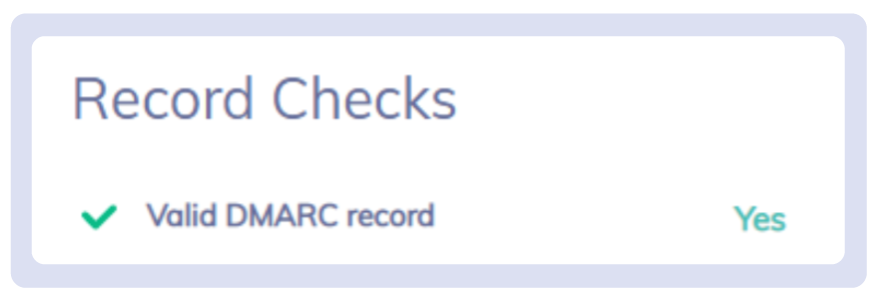
Use a DMARC checker to find syntactical or other formative errors in your record like extra spaces, spelling mistakes, etc.
2. Go for a Softer Policy
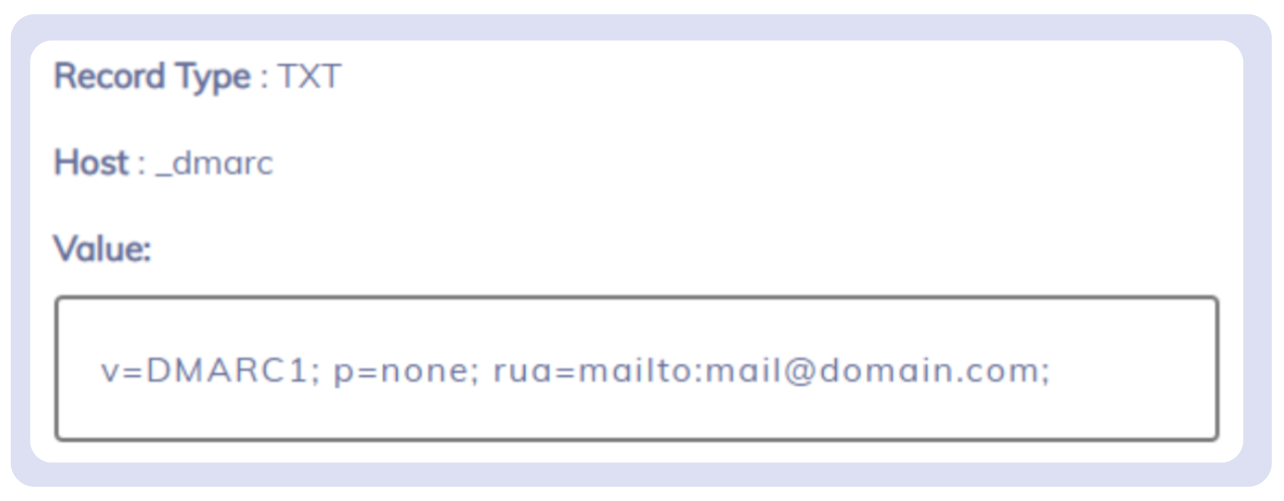
You can always go for a more relaxed policy for DMARC like “none”. This will allow your messages to reach your recipients even if DMARC fails for them. However, this leaves you vulnerable to phishing and spoofing attacks.
3. Use both SPF and DKIM Alignment
Using both DKIM and SPF in conjunction provides a layered approach to email authentication. DKIM verifies the integrity of the message, ensuring it hasn’t been tampered with, while SPF verifies the sending server’s identity. Together, they help establish trust in the email’s source, reducing the risk of spoofing, phishing, and unauthorized email activity.
Fix DMARC Fail with PowerDMARC
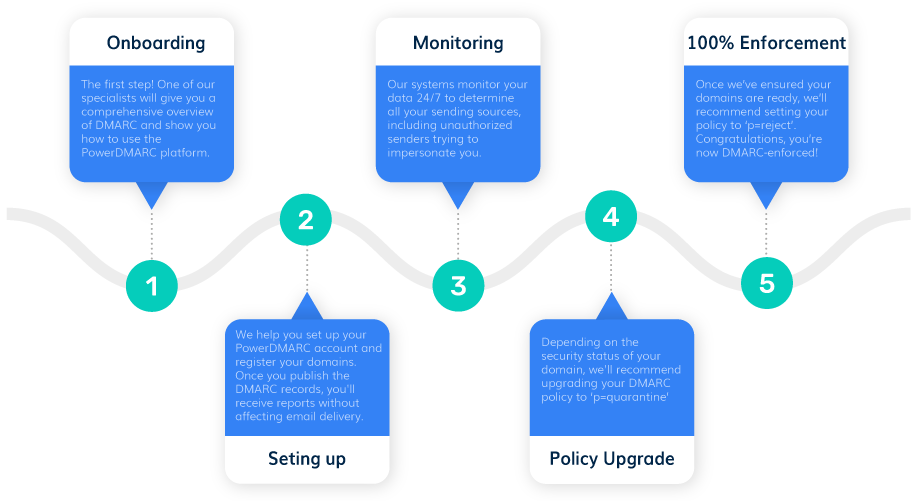
PowerDMARC mitigates DMARC failures by offering a range of comprehensive features and functionalities. First, it assists organizations in the correct deployment of DMARC by providing step-by-step guidance and automation tools. This ensures that DMARC records, SPF, and DKIM authentication are properly configured, increasing the chances of successful DMARC implementation.
Once DMARC is in place, PowerDMARC continuously monitors email traffic and generates real-time reports and alerts for DMARC failures. This visibility allows organizations to quickly identify authentication issues, such as SPF or DKIM failures, and take corrective actions.
In addition to monitoring, PowerDMARC integrates AI threat intelligence capabilities. It leverages global threat feeds to identify and analyze sources of phishing attacks and spoofing attempts. By providing insights into suspicious email activity, organizations can proactively identify potential threats and take necessary measures to mitigate risks.
Contact us to get started!
Conclusion: Furthering Email Security The Correct Way
By adopting a multi-layered approach to email security, organizations and individuals can significantly enhance their defenses against evolving cyber threats. This includes implementing robust authentication mechanisms, employing encryption technologies, educating users about phishing attacks, and regularly updating security protocols.
Additionally, integrating AI tools to further your email’s security practices is the best way to stay on top of sophisticated attacks organized by cyber criminals.
To prevent DMARC failure and troubleshoot other DMARC errors, sign up to get in touch with our DMARC experts today!
Content Review & Fact-Checking Process
This article was curated by a cybersecurity expert. The methods and practices conveyed in this article are real-life strategies that we have deployed for our customers which have helped them overcome DMARC failure. If these methods don’t work for you, contact us for free guidance from a DMARC expert.

Since implementing PowerDMARC for all of our clients, it’s created a much easier process for both onboarding, monitoring, and making changes, even if we aren’t in control of the DNS services.
Joe Burns, Co-founder and CEO of Reformed IT
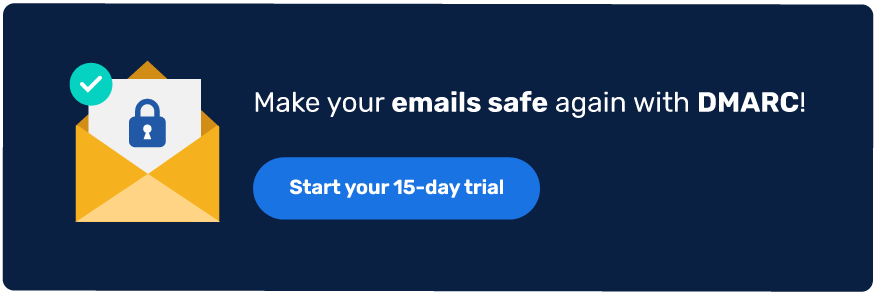
*** This is a Security Bloggers Network syndicated blog from PowerDMARC authored by Maitham Al Lawati. Read the original post at:

